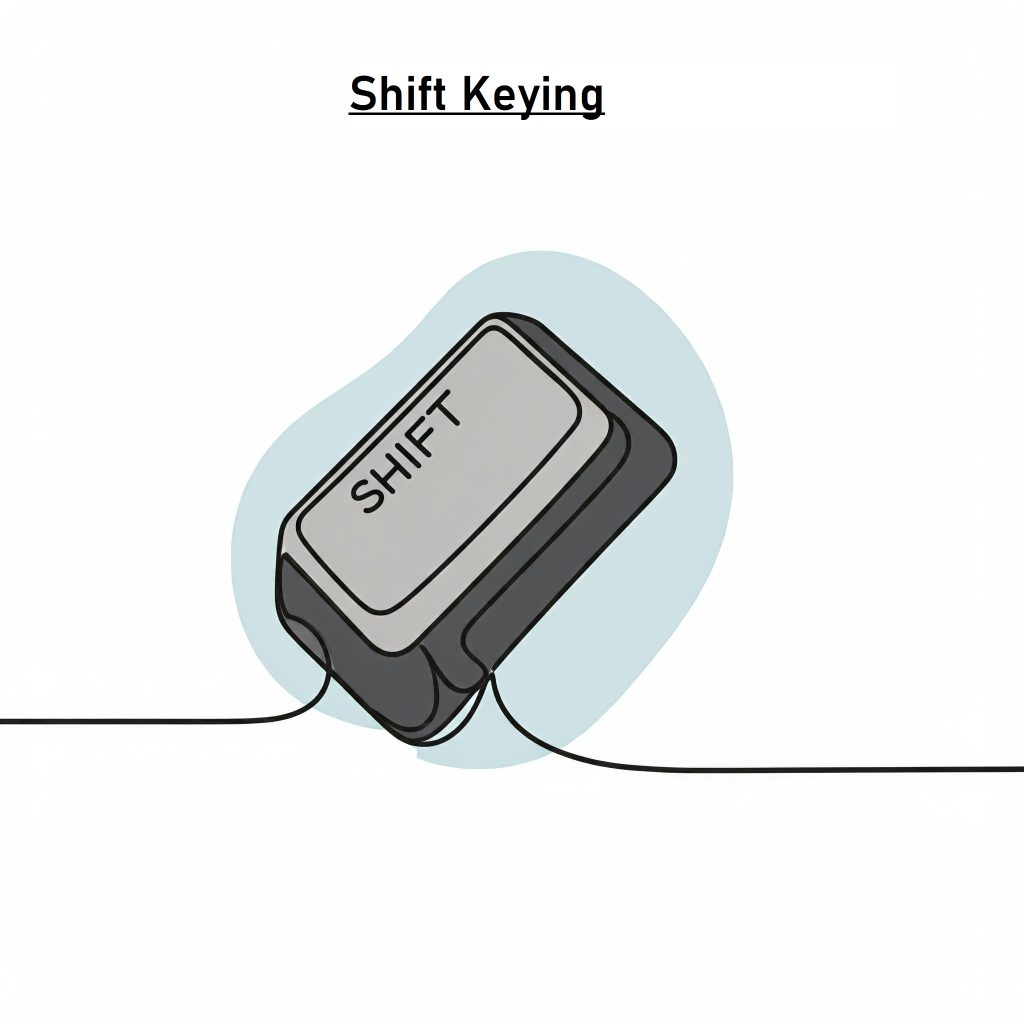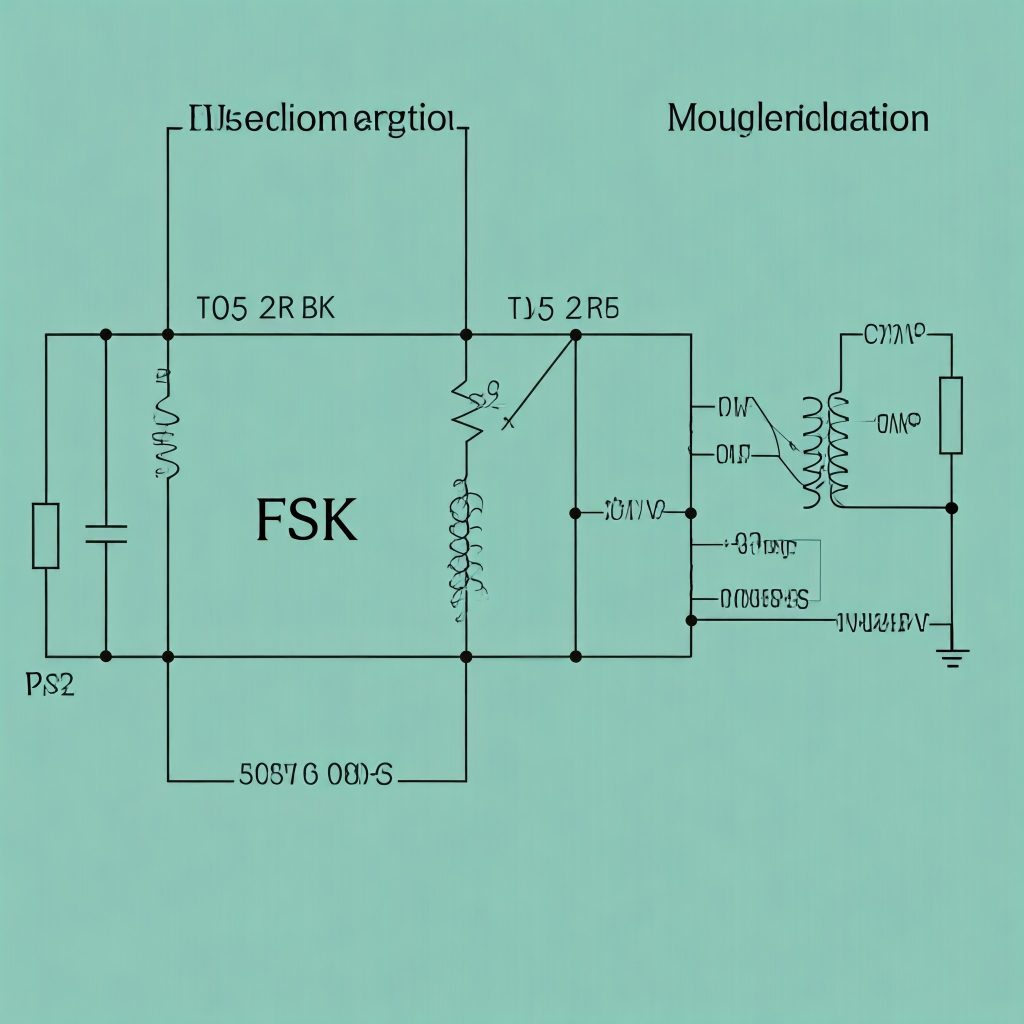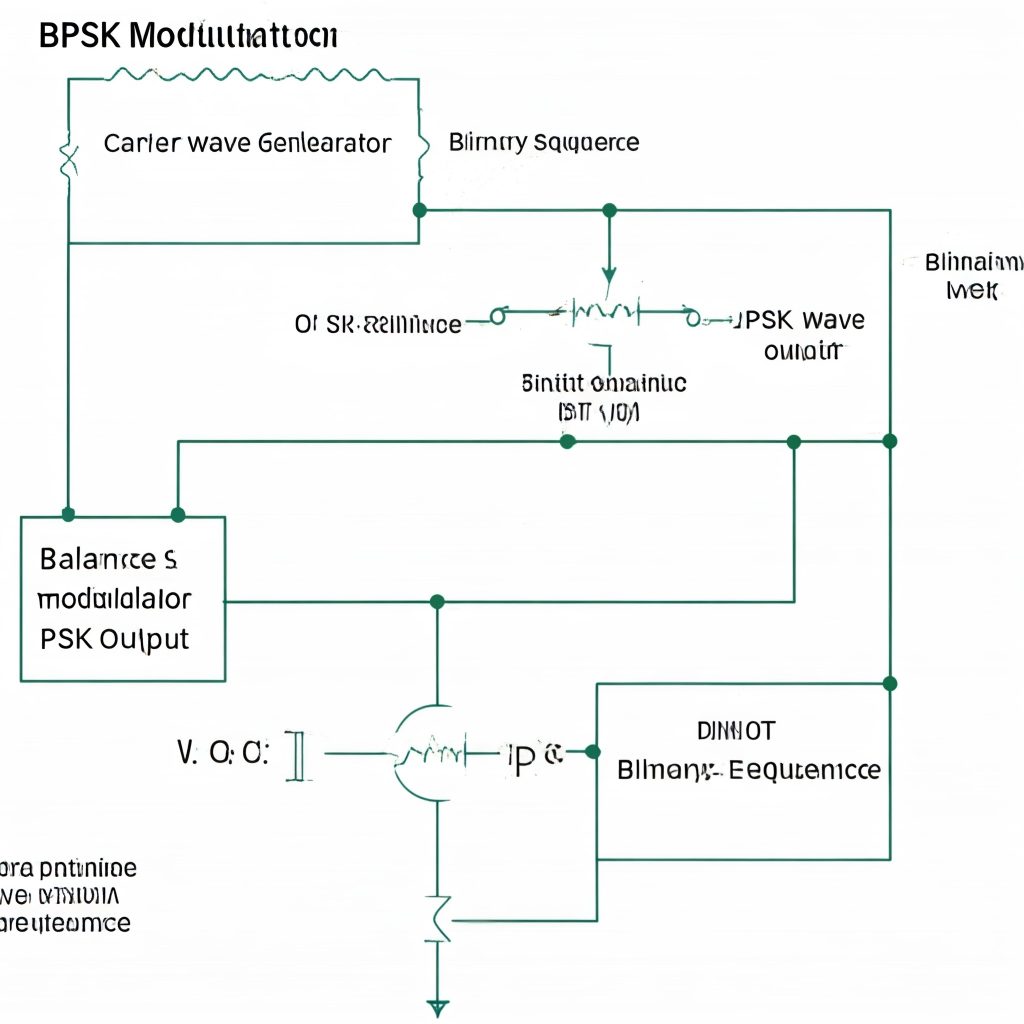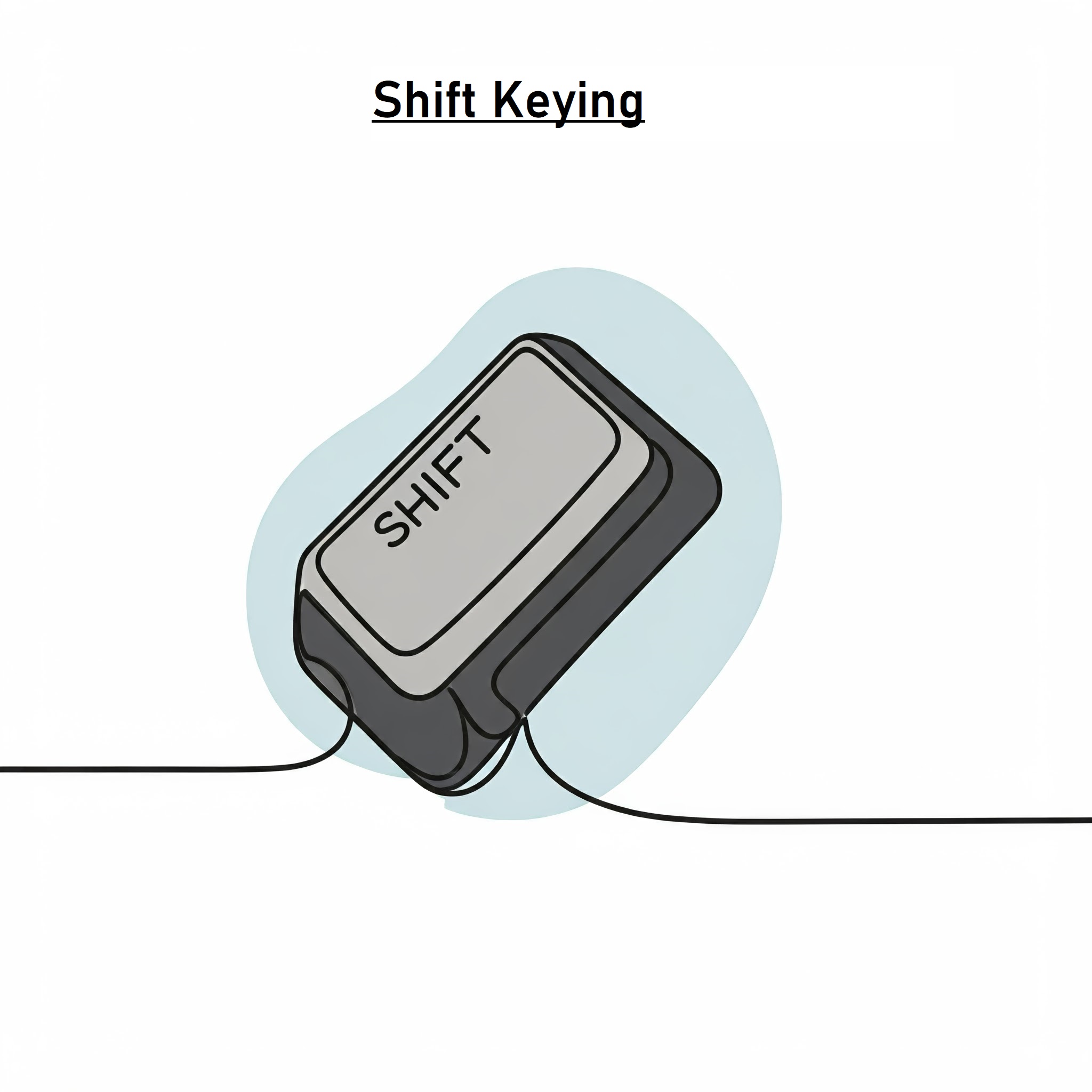
Shift keying is an important method used in digital communication. It changes the way a signal behaves—like its frequency, phase, or amplitude—to send information. This technique helps ensure that data is transmitted reliably, even when there is noise or interference that can disrupt signals. Shift keying is commonly found in devices such as cell phones, radio communications, and digital broadcasting.
In this article, we will explore the different types of shift keying, where they are used, and why they matter in today’s technology. This understanding will highlight how shift keying “Plays a crucial role.” in keeping our communications clear and efficient.
What is Shift Keying?
Shift keying is a fundamental technique used in digital communication systems to encode and transmit information. As the backbone of various data transmission methods, understanding shift keying is essential for anyone interested in telecommunications, data encoding, or digital signal processing. This article provides a comprehensive overview of shift keying, including its definition, how it works, and its significance in modern technology.
Definition of Shift Keying
Shift keying refers to a modulation method that alters specific characteristics of a carrier signal—such as its frequency, amplitude, or phase—to represent digital data. In simpler terms, it involves modifying the signal used to carry information so that the variations can be interpreted as binary data (0s and 1s). By using different signal states to represent binary digits, shift keying enables effective communication over various transmission media.
The main types of shift keying include:
- Frequency Shift Keying (FSK): Modulates the frequency of the carrier signal to represent data.
- Phase Shift Keying (PSK): Alters the phase of the carrier signal.
- Amplitude Shift Keying (ASK): Changes the amplitude signal to convey information.
Each of these methods has unique applications and characteristics but falls under the umbrella of shift keying.
Explanation of How Shift Keying Works in Digital Systems
Shift keying operates on the principle of modulation, where the properties of a carrier signal are modified to encode information. Let’s break down the process into several key components:
Modulation
Modulation is the process of altering the carrier signal to encode information. In digital systems, this involves changing certain properties of the signal:
- Frequency: In FSK, different frequencies represent different binary values. For example, a higher frequency might represent a ‘1’, while a lower frequency represents a ‘0’.
- Phase: In PSK, the phase of the carrier signal is shifted to encode data. For instance, a phase shift of 180 degrees can indicate a transition from ‘0’ to ‘1’.
- Amplitude: In ASK, the amplitude of the carrier wave is changed. A high amplitude might indicate ‘1’, while a low amplitude signifies ‘0’.
Data Encoding
Once the modulation technique is determined, the digital data to be transmitted is encoded using the chosen shift keying method. The digital signal is processed in a way that associates specific signal changes with binary values. This step is essential for ensuring that the receiver can accurately interpret the transmitted information.
Transmission
The modulated signal is then transmitted over the desired communication channel, which could be wired (like coaxial cables) or wireless (like radio waves). The choice of transmission medium can affect the signal’s integrity and the effectiveness of the shift keying technique being employed.
Demodulation
At the receiving end, the process of demodulation occurs, where the receiver extracts the encoded information from the received modulated signal. This involves:
- Detecting the signal changes (frequency, phase, or amplitude) corresponding to the modulation scheme used.
- Converting these changes back into binary data (0s and 1s).
For instance, in FSK, the receiver will measure the frequency of the incoming signal and decode it into the corresponding binary value. Similarly, in PSK and ASK, the receiver identifies phase shifts or amplitude variations, respectively.
Error Detection and Correction
Digital systems often include error detection and correction mechanisms to ensure data integrity during transmission. Shift keying can be susceptible to noise and interference, which can distort the transmitted signal. Techniques such as checksums, parity bits, and redundancy are commonly employed to mitigate these issues and ensure accurate data recovery.
Significance of Shift Keying in Digital Communication
Shift keying is crucial in various applications, including:
- Telecommunications: Shift keying techniques enable efficient and reliable communication over telephone lines, radio frequencies, and satellite systems.
- Data Modems: Modems often use shift keying methods to convert digital data from computers into signals suitable for transmission over analog communication channels.
- Wireless Communication: Shift keying is used in wireless technologies like Wi-Fi and Bluetooth, allowing devices to communicate effectively without physical connections.
Types of Shift Keying
Shift keying is a modulation technique widely used in digital communication systems. It involves altering specific characteristics of a carrier signal to convey information. The primary types of shift keying include Frequency Shift Keying (FSK), Phase Shift Keying (PSK), and Amplitude Shift Keying (ASK). Let’s delve into each type:
Frequency Shift Keying (FSK)

Definition and How It Operates
Frequency Shift Keying (FSK) is a modulation technique where data is represented by varying the frequency of a carrier signal. In FSK, the frequency of the carrier wave changes between two or more discrete frequencies, each representing a different symbol or bit value. For instance, a binary ‘1’ might be represented by a higher frequency, while a binary ‘0’ is represented by a lower frequency.
The operation of FSK can be understood through its two primary forms:
- Binary FSK (BFSK): Uses two frequencies to represent binary data.
- Multiple FSK (MFSK): Uses more than two frequencies for encoding multiple bits of information simultaneously.
Common Applications
FSK is commonly used in various applications, including:
- Modems: In telecommunications, FSK is often employed in modem technologies for data transmission over telephone lines.
- Radio Transmissions: FSK is utilized in digital radio systems for reliable communication.
- Paging Systems: FSK is effective in paging systems, allowing for the transmission of short messages.
Phase Shift Keying (PSK)
Overview of Phase Shifts and Their Significance
Phase Shift Keying (PSK) is another prominent modulation technique where the phase of a carrier signal is varied to encode data. In PSK, the data is represented by changes in the phase of the signal, making it highly efficient in bandwidth utilization. Phase shifts allow the transmission of more bits per symbol compared to simpler modulation methods.
Different Variations (e.g., BPSK, QPSK)

- Binary Phase Shift Keying (BPSK): This is the simplest form of PSK, using two phases (0° and 180°) to represent binary digits. It is robust against noise but has lower data rates.
- Quadrature Phase Shift Keying (QPSK): This variant uses four different phases (0°, 90°, 180°, and 270°) to represent two bits per symbol, effectively doubling the data rate compared to BPSK without increasing the bandwidth.
- Higher Order PSK: Variants like 8-PSK and 16-PSK use eight and sixteen phases, respectively, allowing for even greater data rates but requiring more complex receivers.
Amplitude Shift Keying (ASK)
Description of Amplitude Changes in Signals
Amplitude Shift Keying (ASK) is a modulation technique where the amplitude of the carrier signal is varied to represent data. In ASK, the signal is transmitted at a certain amplitude for a ‘1’ and at a lower amplitude or zero for a ‘0’. This method is straightforward but can be susceptible to noise, which affects the amplitude.
Use Cases and Efficiency
ASK is primarily used in applications where simplicity is paramount. Some common uses include:
- Low-Speed Data Transmission: ASK can be effective for low-speed communication, such as in simple RF systems.
- Optical Communications: ASK is utilized in optical fiber communications, where light intensity changes represent data.
- RFID Systems: Some Radio-Frequency Identification (RFID) systems employ ASK for communication between tags and readers.
Applications of Shift Keying
Shift keying techniques find extensive applications across various fields:
- Telecommunications: Shift keying is integral in telecommunication systems, allowing for efficient data transmission over various mediums.
- Data Transmission Protocols: Many data transmission protocols rely on shift keying to encode and decode data efficiently.
- Remote Control Systems: Shift keying is utilized in remote control devices, enabling communication between controllers and receivers.
- Wireless Communication: Wireless technologies, including Wi-Fi and cellular networks, often employ shift keying for reliable data transmission.
Advantages and Disadvantages
Advantages
- High Efficiency in Bandwidth Usage: Shift keying techniques, particularly PSK and FSK, allow for efficient bandwidth, enabling more data to be transmitted within a given frequency range.
- Robustness Against Noise and Interference: Many shift keying methods are designed to be resistant to noise, ensuring that the transmitted data remains intact even in challenging conditions.
Disadvantages
- Complexity in Implementation: Some shift keying techniques, especially higher-order PSK, can be complex to implement, requiring sophisticated equipment for modulation and demodulation.
- Limitations in Data Rate: While shift keying provides efficient data transmission, certain methods may have limitations in the maximum achievable data rates compared to alternative modulation techniques.
Conclusion
In summary, shift keying plays a vital role in modern digital communication systems, enabling reliable data transmission across various applications. By understanding its principles and various techniques, we can appreciate its significance in our increasingly connected world. As technology continues to evolve, shift keying will remain a fundamental aspect of how we communicate, ensuring efficient and effective data exchange across diverse platforms.
ALSO READ: How To Overcome Blackmail


